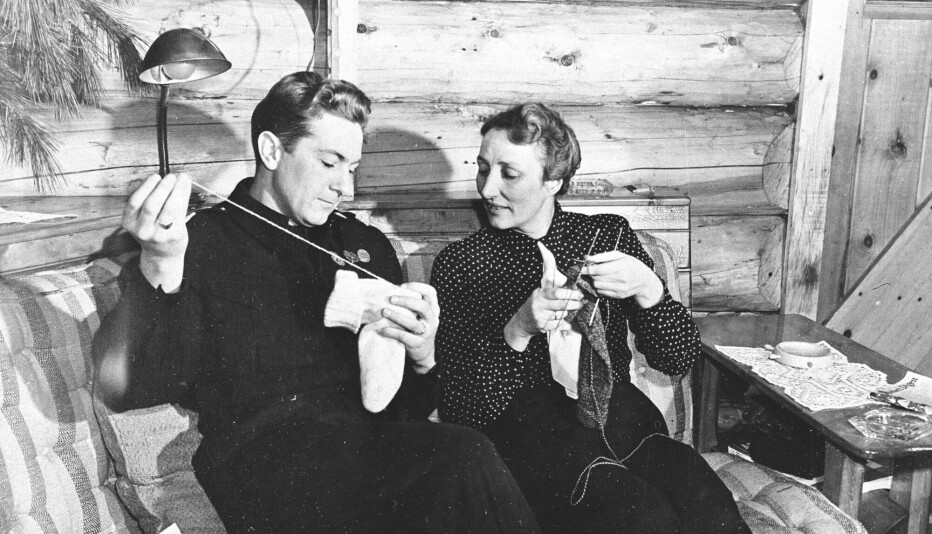
Obesity genes lowered metabolism
Half of the population has genes that can prevent the body from burning calories. When Norwegian researchers knocked out these genes in mice, the mice became extremely thin, even though they ate as much as their rodent brethren.
More than five years ago, a group of researchers from Norway and several other countries found an important clue in the mystery surrounding obesity.
They discovered a mutation that gave humans a significantly greater risk of developing obesity.
A mutation is an alteration in our DNA. And this precise mutation is found in almost half of the European population. That means it probably plays a role in the obesity epidemic.
But how? What does this gene actually do in the body?
Jan-Inge Bjune, a PhD candidate from the University of Bergen and his colleagues have now done experiments with mice to investigate exactly these questions, as part of Bjune's doctoral dissertation.
The results show that the mutation affects how much energy fat cells in the body burn. This may help explain why some people become obese, while others appear to be protected.
The fat disappeared
Researchers already knew that the mutation in question leads to greater activity in two genes named IRX3 and IRX5. These genes cause cells to produce two types of proteins. Greater activity in the genes means higher levels of IRX3 and IRX5 proteins.
"Researchers had previously looked at how these genes work in cells in the lab, but we wanted to see how it worked in a body," says Bjune.
Bjune used gene technology to turn off the IRX5 gene in a group of mice. It had a dramatic effect.
“Almost all the fat disappeared on the mice,” he said.
The animals were not just slim. They also appeared to be completely protected from developing obesity, even when given fatty foods that usually make mice fat.
If the same is true in humans, this may be one of the reasons why some people gain weight, while others living in the same environment remain thin.
The researchers did several studies to find out how IRX3 and IRX5 worked in the mice.
Inhibited beige fat cells
As these genes became more active, they affected the fat cells of the mice in several ways.
One of the changes happened in what are called beige fat cells. Unlike white fat cells, brown and beige fat cells can convert sugar and fat into heat. They can thus burn off excess energy in the body.
But IRX5 inhibited this ability in the mice, so that the calories from the food the mice ate were stored as fat.
At the same time, IRX5 inhibited the turnover of energy in the mitochondria — the energy factories — in the fat cells. This also affected how many calories the mice burned.
The IRX3 gene also worked in a slightly different way. This gene was necessary for new fat cells to form.
Ate as much but became thinner
When the researchers knocked out the genes, however, the mitochondria and the beige fat cells began to function again, and fewer new fat cells were formed. This was probably what protected the mice from becoming obese.
The mice ate as much as the other mice, but converted the excess energy in the food into heat instead of storing it as fat.
Now Bjune and colleagues hope that this knowledge will contribute to better treatment for people with obesity.
“That's the ultimate goal,” he says.
Can provide result in treatment
Professor Bård Kulseng is head of the Centre for Obesity Research and Innovation at St. Olavs Hospital in Trondheim. He thinks the findings are interesting.
“The research community in Bergen is at the forefront of research on the regulation of metabolism and fat cells, and these studies are important basic research,” he says to sciencenorway.no.
“New knowledge about variations between people and the interaction between food, environment and genetics can provide more targeted and individualized treatment for people with obesity,” he said.
Kulseng’s view is supported by Jøran Hjelmesæth, head of the Morbid Obesity Centre, Vestfold Hospital Trust, and a professor at the University of Oslo.
“This is precisely what we are looking for: New knowledge that can be used to create better treatment,” he said to sciencenorway.no.
The body needs these genes
Bjune and his colleagues’ results suggest that it may be possible to create drugs that allow people who are obese to lose weight without eating less.
But it will not be easy.
The genes in question are important, says Bjune.
They probably play a significant role in foetal development, and are necessary for eyesight and the heart, as two examples. It’s not necessarily a good idea to give people medicines that knock out these genes throughout the body.
Instead, researchers will have to try to make drugs that affect IRX3 and IRX5 only in adipose tissue.
“This type of technology is used in animals, but it’s another thing altogether to do this in humans. We don’t yet know enough about all the functions of these genes,” Bjune says.
Hjelmesæth also warns that we shouldn’t get our hopes up too much.
“Unfortunately, most discoveries don’t result in new therapies,” he said.
And even when they actually lead to new medicines, it takes a long time.
“First, the medicine has to be made and tested in animals, and then it has to be tested in humans. It usually takes 10 to 20 years,” he says.
Many genes affect obesity
Hjelmesæth and Kulseng both say that the new research is still useful, even if it won’t necessarily result in new treatments.
That's because the results give researchers greater insight into what obesity actually is.
Researchers already know that genes have a lot to say in terms of who develops obesity and who doesn’t. Different researchers have found more than 100 genes that increase the risk of being overweight and obese.
The vast majority of these genes have to do with managing satiety and hunger, says Hjelmesæth.
If you have many of these genes, you feel hunger more strongly and are less easily sated, compared to other people. That means it is much harder for you than for others to eat small enough portions to maintain a normal weight.
However, the genes that Bjune and colleagues examined did not affect the appetite of the mice, but their metabolism. This is a field about which much less is known.
Gained weight without eating more than others
If these genes function the same way in humans as they did in Bjune’s mice, it means that people who have the particular mutations store more fat than other people, without eating more or exercising less.
“It is important to realize that we are all put together differently, and that we respond differently to the environment,” says Kulseng.
He believes the obesity epidemic is probably due to the interaction between our genes and the changes that have occurred in our environment over the past 40 years. In other words, it's probably a lot more complicated than just portly people who eat more calories or exercise less than their thinner compatriots.
Could reduce the sense of shame
Kulseng says the reasons behind obesity can range from the type of food we eat to environmental pollution.
Environmental changes do not alter our genes, but can change how our genes work. These changes can have an influence from even before birth, by turning different genes on or off. This in turn has an impact on a person’s risk of being overweight and obese for the rest of that person’s life.
“One can hope that a greater understanding of the complexity of this issue can reduce the sense of shame that many people have about obesity. Obesity need not be due to poor self-control or personal failure,” he said.
Translated by Nancy Bazilchuk
Reference:
Jan-Inge Bjune, Regulation of adipogenesis and fat storage by IRX3 and IRX5, doctoral dissertation. University in Bergen.
———
Read the Norwegian version of this article at forskning.no

































